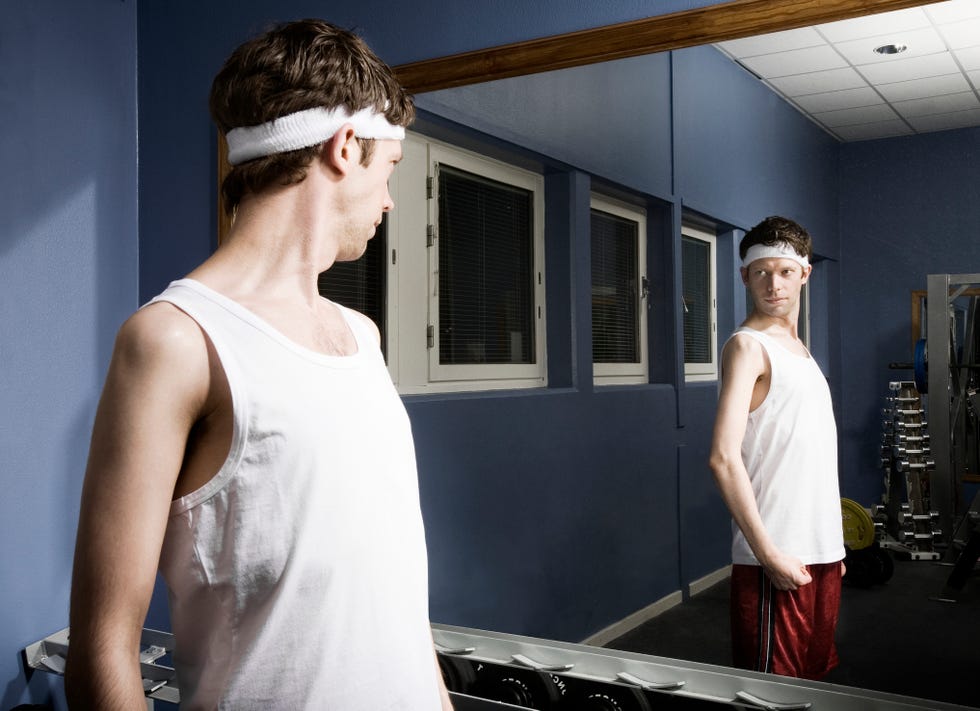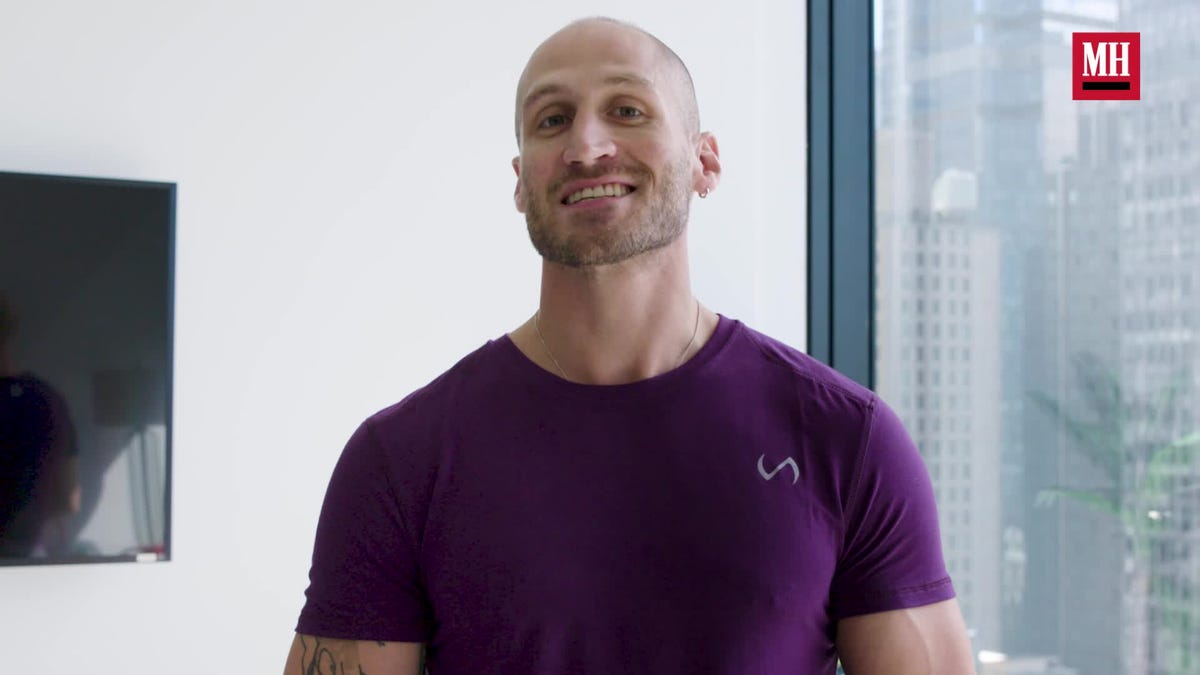No matter where You are on your fitness journey, it can be hard to be patient. Yes, you probably wish you fast-tracked your goals so you could cross that finish line (literally or figuratively) ASAP. The sense of accomplishment that comes with making significant progress and reaching new PRs is often what motivates you to keep going. But as a wise man once said, there is no magic bullet for instant gratification. And, after all, if it was easy, it wouldn’t be called “work”, right?
Don’t get discouraged if you feel like you haven’t seen the results you were after right away. There are many changes behind the scenes that are worth celebrating.
Just know, exactly how The length of time it takes to see results from your exercise routine varies from person to person. “There are many factors that contribute to this timeline,” says Kurt EllisCSCS, owner and trainer at Beyond Numbers Performance. “Factors such as genetics, age, gender, type of training program, and lifestyle factors can affect how quickly a person sees changes.”
Here, Ellis goes over a few of those key elements, shares some of the results you can expect and when to see them, and offers more insight into what it means to “see results” so you can at every stage of your journey. Celebrate your successes. .
How long does it take to see results from working out?
You might assume that gym veterans will see results sooner because they’re new to the game, but that’s not necessarily the case, according to Ellis. “Beginners will usually experience results sooner than advanced athletes because of both their baseline fitness and training age. [how long you’ve been working out] is low,” he says.
Think about it: if you’re a beginner looking up from the floor to the ladder, there are more runs to climb, and therefore more surfaces to reach – and with each century, you progress. . Whereas more advanced athletes may have already reached some of the lower milestones and miles and have less distance to travel to the top.
There’s also the issue of neural adaptation, aka “new acquisitions.” When beginners begin strength training, neural adaptations will lead to rapid improvements in strength (and to a lesser degree, muscle growth). This initial progress is exciting, but it only lasts so long (and probably won’t get you to the point of accomplishing your major training goals, anyway). Once you go beyond that initial improvement and maybe even reach a plateau, it’s important to remember that you’ll still see results—just more slowly than when you started.
one A frequently cited study from 2009 shows that it takes at least 18 days for a person to form a habit when deciding to change behavior, and this goes for all types of athletes, Ellis explains. So you might consider that timeline your first benchmark toward progress—and that should be celebrated. Deciding to work towards something, making changes, and committing to them is not an easy task.
From there, “usually you can see significant changes—whether it’s body composition, changes in heart rate, etc.—within two to six weeks,” Ellis says. This breaks down to approximately two to four weeks for beginners and four to six weeks (or more) for more experienced athletes.
Signs you’re getting better
Even if weight loss is your goal, the number on the scale is definitely not the only meaningful metric to measure your progress against. (Remember, the benefits of fitness and being active aren’t just about your weight or how you look.)
neural adaptation
Most of the initial “results” from your workout happen at an invisible, cellular level. As mentioned above, every time you ask the body to do something new or challenging – trying a new sport, learning the crow pose in yoga, or just starting an exercise routine for the first time – The brain has to create new ways for the body to signal to the body. Do it in ways you haven’t before. “Neural adaptations are changes that occur in the nervous system, which play a very important role in improving strength, coordination, motor learning and overall performance,” Ellis explains.
“Neural plasticity [the brain’s ability to adapt and evolve] It allows you to continue to develop new ways throughout your fitness journey,” says Ellis. Appropriate training stimuli. It is important to continuously develop these neural pathways to strengthen and stimulate them.
The easiest way to do this is with a pre-made training plan. You will know exactly what exercises to do, when to increase the intensity, and how much to rest. Get a personalized recommendation from our library of training plans using our workout finder below.
Energy
Also, “one of the first changes people will notice is a change in energy levels,” Ellis says. Just as the microtears in your muscles caused by strength training help the body repair, grow and get stronger, a similar process exists for your energy levels. Exercising yourself during a workout may make you feel taxed during a session, but the challenge actually signals your body to produce more mitochondria, the energy stars of your cells. Harvard Health.
mood
Also, thanks to the release of feel-good hormones like endorphins during exercise, your new fitness routine can improve your mood. Any type of physical activity releases endorphins, but research is still developing as to which type of training or intensity of exercise gives you the biggest rush of endorphins. For example, a 2017 study published in the journal Neuropsychopharmacology suggests that high-intensity training is the way to go if you’re looking for a “higher workout.”
dream
Another big result you’ll notice fairly soon after starting a new fitness routine or training program is better sleep. Don’t underestimate it as a key factor in your overall health. Adequate rest can be an important factor in maintaining motivation to train in the short and long term. A small study from 2013.
Other benchmarks to consider are tracking the results of the exercise
In addition to some other lifestyle measures like energy and sleep, if you’re someone looking to measure something a little more, Ellis offers one of two quantitative metrics based on your fitness goals.
For those looking for results from strength training, you can track progress against absolute strength. This happens often Measured by the one rep max (1RM) test– The heaviest weight you can lift in one exercise, such as a bench press or barbell squat, for one rep through a full range of motion and with proper form. (If you’re new to strength training, we recommend that you test three to five sets, then use the training bar chart for a one-rep max rather than going all out for a single rep. ) You can also check this. Your progress in relative strength, which takes your body into account, is to see how much you can lift relative to your body weight, Ellis says. Simply divide the weight lifted by your body weight to find this measurement.
If you have more endurance and cardio-focused goals, a universally used metric to measure progress is your VO2 max. It basically measures how well your body is able to use oxygen. But know this: Accurately tracking your VO2 max Requires a lot of fancy equipment and is best done in a lab setting. Fortunately, due to the demand from athletes who want a more realistic way to evaluate their numbers, many fitness trackers and smartwatches offer a VO2 max estimate, which you can use to track your progress.
Use smart goals
Remember that when it comes to thinking about your workout results, how you set your goals in the beginning can make a big difference. “Setting SMART (Specific, Measurable, Achievable, Realistic, Time-bound) goals is the key to success,” Ellis says. “Conservators will typically see long-term, sustainable results when they incorporate process goals across major pathways. Image goals.”
Think about it: swelling or “Getting abs“There’s a lot more involved than simply working out. Well,” he says.
#long #fitness #results #Experts #share #ideas

